|
Having Joint Surgery? Start to Exercise Now! The stronger your muscles are before surgery, the faster you will recover.
- reduced joint protection Before your operation you may have trouble moving because of pain and stiffness. You need to know:
Here are a few simple movements you can try. When doing these exercises hold, then let go and relax. 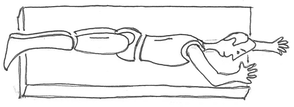 Hip and Knee Lie on bed face down (toes over end of mattress) 1. Lie flat on tummy for 20 minutes a day to keep your hip straight.
- your straight leg, an inch or so from bed to strengthen the hip Lie on back with knees bent 2. Bend hip and knee as far as you can comfortably manage 3. Lift buttocks and squeeze 4. Part knees as far as you can  Sit - dining chair height, thighs level and feet flat on floor 5. Lift foot to straighten knee, this muscle is your knee support (practice straightening knee fully while standing, sitting or lying) 6. Stand up and sit down up to 10 times in quick succession Stand (hip and knee exercises continued) 7. Stand on one leg. 8. Walk with long strides. 9. Walk sideways with wide steps 10. Walk – small walks, long walks, fast walks, slow walks Walk as far and as often as you can comfortably manage Hands 11. Forearm on table, Lift hand & make a fist. Spread fingers out wide. palm down. Relax. Repeat.  12. Press paid of thumb against finger pads  13. Bend thumb across palm and back again  Shoulders Lie on back 14. Clasp hands and lift arms above body and over head Stand or Sit 13. Clasp wrists/hands. 16. 'Dry' back with 17. Shrug and roll shoulders behind back. Move scarf or small - arms hanging loose away from body. towel. 18. Sit upright swing arms 19. Lean forward one hand on knee, swing other arm across front of body and back, bringing elbow to shoulder. 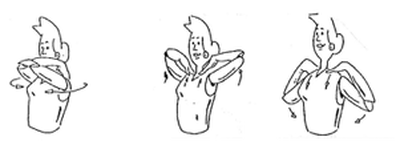 20. Elbow circles Contact Therapy Professionals if you would like to help with these exercises - our friendly physiotherapists can help.
Therapy Professionals Phone: 03 3775280 Email: [email protected] Mindfulness Jon Kabat-Zinn  What is Mindfulness? Mindfulness is an ancient Buddhist practice, which is very relevant for life today. Mindfulness is a very simple concept. Mindfulness means paying attention in a particular way: on purpose, in the present moment, and non-judgementally. This increases awareness, clarity and acceptance of our present-moment reality. Mindfulness does not conflict with any beliefs or tradition, religious, cultural or scientific. It is simply a practical way to notice thoughts, physical sensations, sights, sounds, smells - anything we might not normally notice. The actual skills might be simple, but because it is so different to how our minds normally behave, it takes a lot of practice. I might go out into the garden and as I look around, I think "that grass really needs cutting, and that vegetable patch looks very untidy". My young daughter on the other hand, will call over excitedly, "Mummy - come and look at this ant!" Mindfulness can simply be noticing what we don't normally notice, because our heads are too busy in the future or in the past - thinking about what we need to do, or going over what we have done. Being mindful helps us to train our attention. Our minds wander about 50% of the time, but every time we practise being mindful, we are exercising our attention "muscle" and becoming mentally fitter. We can take more control over our focus of attention, and choose what we focus on...rather than passively allowing our attention to be dominated by that which distresses us and takes us away from the present moment. Mindfulness might simply be described as choosing and learning to control our focus of attention. Automatic Pilot In a car, we can sometimes drive for miles on “automatic pilot”, without really being aware of what we are doing. In the same way, we may not be really “present”, moment-by-moment, for much of our lives: We can often be “miles away” without knowing it. On automatic pilot, we are more likely to have our “buttons pressed”: Events around us and thoughts, feelings and sensations in the mind (of which we may be only dimly aware) can trigger old habits of thinking that are often unhelpful and may lead to worsening mood. By becoming more aware of our thoughts, feelings, and body sensations, from moment to moment, we give ourselves the possibility of greater freedom and choice; we do not have to go into the same old “mental ruts” that may have caused problems in the past. 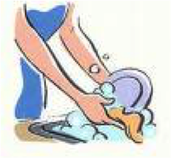 Mindful Activity When I wash the dishes each evening, I tend to be "in my head" as I'm doing it, thinking about what I have to do, what I've done earlier in the day, worrying about future events, or regretful thoughts about the past. Again, my young daughter comes along. "Listen to those bubbles Mummy. They're fun!" She reminds me often to be more mindful. Washing up is becoming a routine (practice of) mindful activity for me. I notice the temperature of the water and how it feels on my skin, the texture of the bubbles on my skin, and yes, I can hear the bubbles as they softly pop continually. The sounds of the water as I take out and put dishes into the water. The smoothness of the plates, and the texture of the sponge. Just noticing what I might not normally notice. A mindful walk brings new pleasures. Walking is something most of us do at some time during the day. We can practice, even if only for a couple of minutes at a time, mindful walking. Rather than be "in our heads", we can look around and notice what we see, hear, sense. We might notice the sensations in our own body just through the act of walking. Noticing the sensations and movement of our feet, legs, arms, head and body as we take each step. Noticing our breathing. Thoughts will continuously intrude, but we can just notice them, and then bring our attention back to our walking. The more we practice, perhaps the more, initially at least, we will notice those thoughts intruding, and that's ok. The only aim of mindful activity is to continually bring our attention back to the activity, noticing those sensations, from outside and within us.  Mindful Breathing The primary focus in Mindfulness Meditation is the breathing. However, the primary goal is a calm, non-judging awareness, allowing thoughts and feelings to come and go without getting caught up in them. This creates calmness and acceptance.
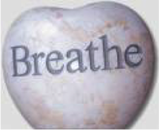 Breathing Meditation 1 (Kabat-Zinn 1996) Assume a comfortable posture lying on your back or sitting. If you are sitting, keep the spine straight and let your shoulders drop. Close your eyes if it feels comfortable. Bring your attention to your belly, feeling it rise or expand gently on the in breath and fall or recede on the outbreath. Keep your focus on the breathing, “being with” each in breath for its full duration and with each outbreath for its full duration, as if you were riding the waves of your own breathing. Every time you notice that your mind has wandered off the breath, notice what it was that took you away and then gently bring your attention back to your belly and the feeling of the breath coming in and out. If your mind wanders away from the breath a thousand times, then your “job” is simply to bring it back to the breath every time, no matter what it becomes preoccupied with. Practice this exercise for fifteen minutes at a convenient time every day, whether you feel like it or not, for one week and see how it feels to incorporate a disciplined meditation practice into your life. Be aware of how it feels to spend some time each day just being with your breath without having to do anything. Breathing Meditation 2 (Kabat-Zinn 1996) Tune into your breathing at different times during the day, feeling the belly go through one or two risings and fallings. Become aware of your thoughts and feelings at these moments, just observing them without judging them or yourself. At the same time, be aware of any changes in the way you are seeing things and feeling about yourself. Using mindfulness to cope with negative experiences (thoughts, feelings, events) As we become more practised at using mindfulness for breathing, body sensations and routine daily activities, so we can then learn to be mindful of our thoughts and feelings, to become observers, and subsequently more accepting. This results in less distressing feelings, and increases our level of functioning and ability to enjoy our lives. With mindfulness, even the most disturbing sensations, feelings, thoughts, and experiences, can be viewed from a wider perspective as passing events in the mind, rather than as "us", or as necessarily true. By simply being present in this way, you support your own deep healing (Brantley 2003).  When we are more practiced in using mindfulness, we can use it even in times of intense distress, by becoming mindful of the actual experience as an objective observer, using mindful breathing and concentrating attention on breathing with the body's experience, listening to the distressing thoughts mindfully, recognising them as merely thoughts, breathing with them, allowing them to happen without believing them or arguing with them. If thoughts are too strong or loud, then we can move attention to our breath, the body, or to sounds in the environment. We can use kindness and compassion for ourselves and for the elements of the body and mind's experience. "May I be filled with peace and ease. May I be safe" (Brantley 2003). Jon Kabat-Zinn uses the example of waves to help explain mindfulness. Think of your mind as the surface of a lake or an ocean. There are always waves on the water, sometimes big, sometimes small, sometimes almost imperceptible. The water's waves are churned up by winds, which come and go and vary in direction and intensity, just as do the winds of stress and change in our lives, which stir up waves in our mind. It's possible to find shelter from much of the wind that agitates the mind. Whatever we might do to prevent them, the winds of life and of the mind will blow, do what we may. "You can't stop the waves, but you can learn to surf" (Kabat-Zinn 2004). Mindful Breathing The primary goal of mindful breathing is simply a calm, non- judging awareness, allowing thoughts and feelings to come and go without getting caught up in them.
www.get.gg www.getselfhelp.co.uk/mindfulness.htm © Carol Vivyan 2009, permission to use for therapy purposes  World MS Day - 30 May 2021 Multiple Sclerosis (MS) is an autoimmune disease of the central nervous system in which the insulating covers of nerve cells become inflamed in the brain and spinal cord causing damage. This damage disrupts the ability of parts of the nervous system to communicate with the rest of the body resulting in a wide range of signs and symptoms, including:
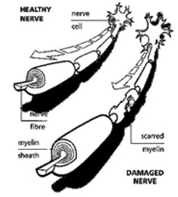 With MS, new symptoms either occur in isolated attacks or build up progressively over time. Between attacks, symptoms may go away completely, however, permanent damage often occurs, especially as the disease advances. Multiple Sclerosis is more common in:
There's no cure for multiple sclerosis, however, treatments can help speed recovery from attacks, modify the course of the disease and help manage the symptoms. Management may include:
Therapy Professionals Physios, Speech Language, Music, Occupational Therapists and Dietitians can help just call us. Follow this link to hear Tracey Ellery’s song (composed with Kimberley Wade, Music Therapist) on her experience of MS: https://www.facebook.com/cantabrainerschoir/videos/1963130150584002/ For more information check out the MSNZ website. MSNZ is a non-profit organisation formed to provide on-going support, education and advocacy for people with MS and their support networks. It also aims to educate the general public, employers and health professionals about MS and actively funds key research into the condition. Just contact us at Therapy Professionals our friendly therapists can help. Phone (03) 3775280, Email: [email protected] Website: http://www.therapyprofessionals.co.nz 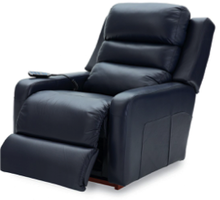 Are Lazy Boy Chairs fit for purpose in residential care? Keeping residents mobile for as long as possible is an advantage for residential providers. Mobile residents are easier to look after and cause staff less physical strain. The question is are residential facilities purchasing the best chairs, to encourage mobility? Many residents, particularly in aged care facilities, spend much of their time sitting in one position. To keep mobile residents need to be able to get out of their chairs with ease. In order to do this, they must:
Lazy boy chairs seem to be the chair of choice for many aged care and other residential residents. However are they fit for purpose? The ‘La-Z-Boy’ chair originated in America and was based on the reclining patio chair that had a back which swung back on an angle pushing the seat forward. Once they were upholstered, they were marketed as ‘comfortable recliner lounge chairs’. When wheels were added to the chairs, they became a common feature in aged care and other residential facilities. Often the wheeled lazy boy takes the place of a wheelchair reducing transfers and opportunities for walking. Little thought has been given to whether lazy boy chairs fit the needs of residents or the staff caring for them. The standard lazy boy has a number of issues for the residents, mobility, posture and lack of pressure relief. They are generally too low with a seat that slopes backward, making it difficult for the person to wriggle forward and get out of. They are not supportive enough, encourage a fixed slumped posture, which can affect breathing, eating and drinking. For residents who are unable to move themselves they do not offer much pressure relief making them at risk of a pressure injury. A common practice is to place pressure cushions on the seat of lazy boys, this raises the person higher in the chair, reducing the support from the armrests and increasing the falls risk. Initially small wheels were fitted to lazy boys making them hard to push especially on carpeted floors; many of these chairs are still around. Larger wheels were introduced to make it easier for care staff to push the chairs; unfortunately this makes the chairs too high for the average resident to place their feet on the floor. This leaves their legs dangling, which is uncomfortable, and encourages them to slide forward in the chair. Even with larger wheels lazy boys are heavy to move and put staff at risk of injury. Electrically operated lifter lazy boys can be useful for people who have limited arm strength and are unable to push themselves up from a chair. They may find the assistance to stand enables them to get up independently and maintain their mobility. Lazy boy chairs are often not the best choice for older and disabled people or their carers. There are many other options. Therapy Professionals Ltd’s friendly Physiotherapists or Occupational Therapists can give unbiased advice on seating which can improve the comfort and mobility of residents in residential facilities. They may also be able to suggest less costly and versatile alternatives. Just contact us:
Phone: 03 377 5280 Email: [email protected] For more information on choosing chairs for your facility, seating people correctly and pressure areas check out these links. https://www.therapyprofessionals.co.nz/uploads/4/9/5/2/49523375/seating_people_comfortably.pdf https://www.therapyprofessionals.co.nz/uploads/4/9/5/2/49523375/skin_injuries_caused_by_pressure.pdf https://www.therapyprofessionals.co.nz/uploads/4/9/5/2/49523375/seating_advice_for_residential_care.pdf |
AuthorShonagh O'Hagan Archives
July 2024
|


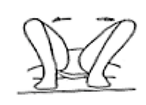

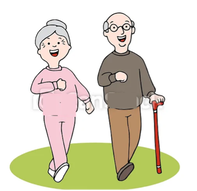
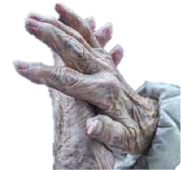
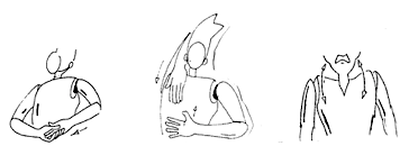
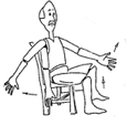
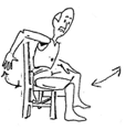
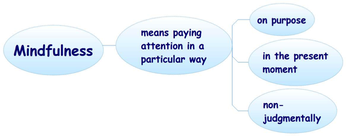
 RSS Feed
RSS Feed